Try Out This Rifle Hunting Option
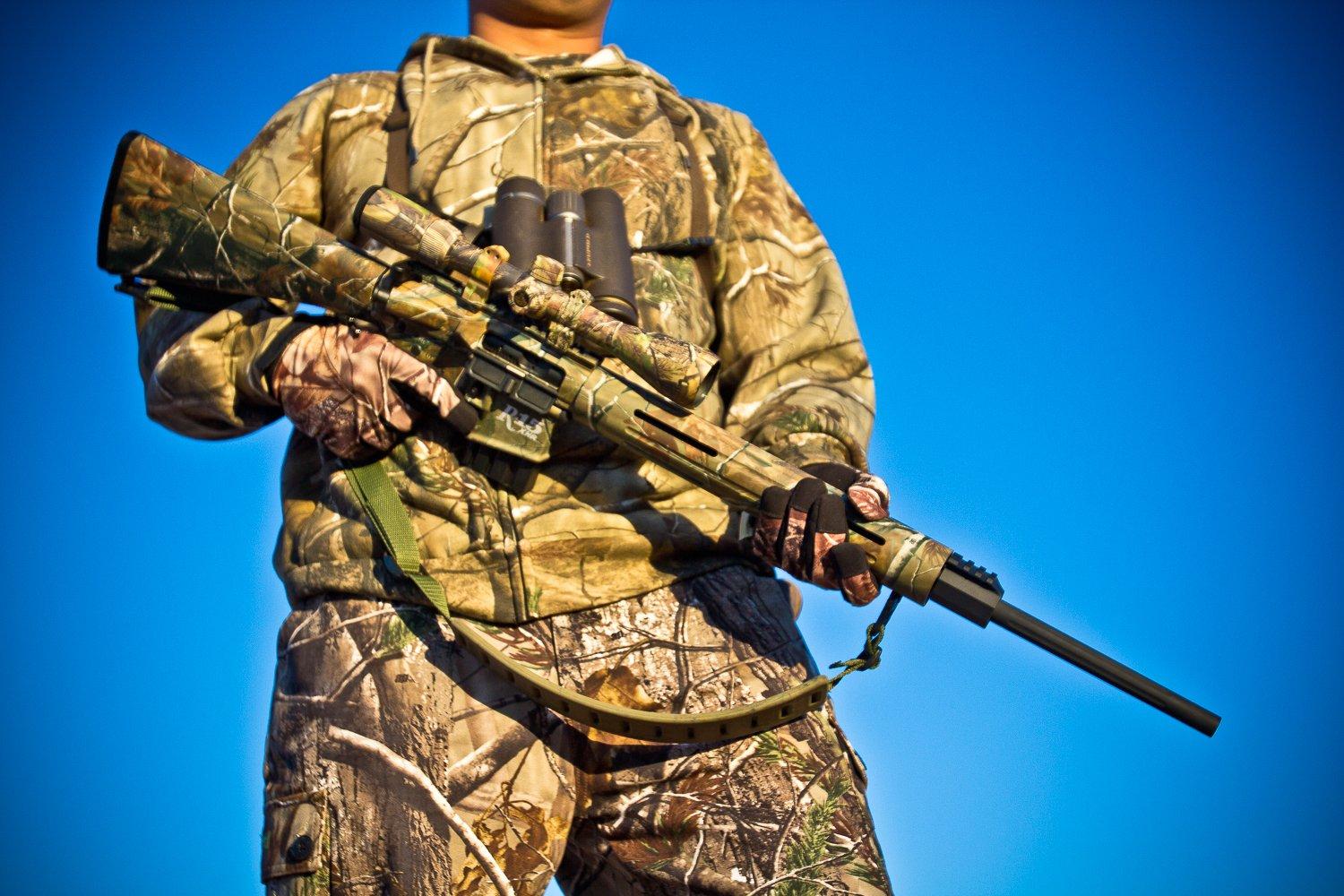
The ease of customizing an AR is its greatest appeal. Not only can you easily add a bunch of accessories, you can also switch upper receivers to change the caliber. Actually, you can change and customize just about every part of an AR, including the handguard, trigger, grip, sights, magazine, stock and more. Once you have customized the necessary parts, you can start accessorizing with lights, optics, slings and more. These firearms are like Lego kits for adults.
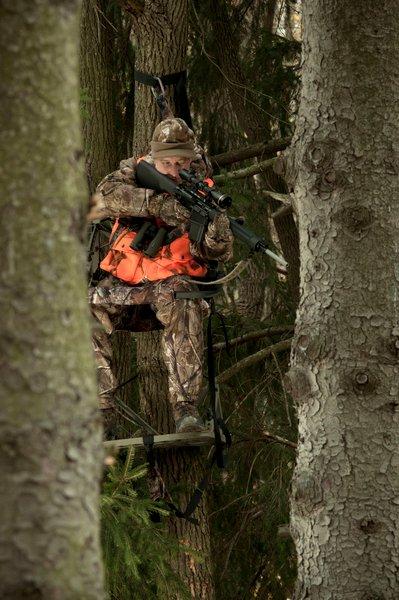
AR-15 vs. AR-10
The standard AR-15 is a 5.56mm or .223 (note: the two rounds aren't exactly interchangeable; the .223 Remington will work just fine in a 5.56mm chamber, which is the military caliber, but it's unsafe to try it the other way around). Today, AR-15s are available in a number of different calibers, ranging from .22LR to .50 Beowulf, but the most common and popular caliber is .223. The AR-15 in .223 is essentially a defense and predator/varmint hunting rifle. The .223 will work on big game with the right bullet (and where legal), but it's really too underpowered for all around big-game use.
If you are planning to hunt big game - deer, antelope, elk -- with an AR platform rifle, then you should seriously consider a larger caliber upper receiver assembly or, even better, an AR-10 type rifle. That platform, while significantly bigger, heavier and often more expensive than an AR-15, is available in excellent big-game calibers. The base round is .308, but rifles and uppers are available in .243, 7mm-08, .260 Remington and similiar-sized rounds.
Lower Receiver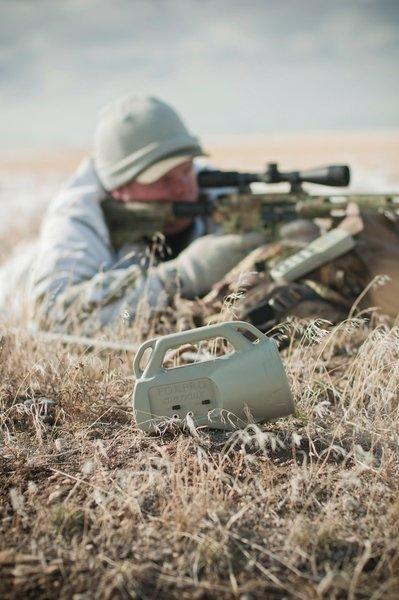
Lowers can be bought fully assembled or stripped. A fully assembled lower comes with trigger, hammer, disconnector, safety selector lever, bolt catch, magazine catch, magazine button, pistol grip, all necessary pins, detents and springs already installed. It is ready to be attached to an upper receiver. A stripped lower comes bare and you install the components of your choice.
Upper Receiver
Most of the components of your AR are for look, fit and feel. The two pieces of the puzzle that truly define your AR, however, are its upper receiver and barrel. These determine the ammunition you will use, and at what distance the rifle will be most accurate.
Upper receivers can also be purchased stripped or barreled. A stripped upper is essentially a shell to which you add a barrel, bolt and bolt carrier, and forend of your choice. If you are building your own AR, you will likely go this route.
A barreled upper is a package deal that comes assembled with the components listed above and is ready to be attached to the lower receiver. You can switch calibers by simply switching uppers. You just take off the barreled .223 upper and attach a barreled .22LR (or whatever) upper. It's that easy.
Upper receivers also determine what sort of sight system you'll be using. The old A1 upper has a fixed carry handle attached to its top. It is a simple open-sight system with two selectable apertures, and the rear sight is part of the carry handle. It was adjustable for windage, but adjustment is somewhat difficult. This is the upper you recognize on Vietnam-era rifles. The A2 also has a fixed carry handle, but has a more advanced windage-adjustable sight system. If you plan to install a scope on your AR, then your best bet is to have an A3 or Flattop receiver with a MIL-STD-1913 mounting rail (a so-called Picatinny rail).
Picatinny Rail
Picatinny rails are what make ARs so easy to customize. Pic rails are actually just brackets that have become the AR's standardized accessory mounting platforms. The rail has a series of T-shaped ridges separated by slots that allow accessories to be mounted by sliding them onto the rail and clamping them down. For the best, most stable attachment, choose accessories with screws that pass through the slots. Originally developed to solve the problem of mounting a scope on an AR, Pic rails now are used to mount many different types of accessories such as lights, lasers, sights, night vision, foregrips and bipods. They are such a solid platform for optic and accessory mounting that they're now in widespread use on a variety of other firearms.
Barrels
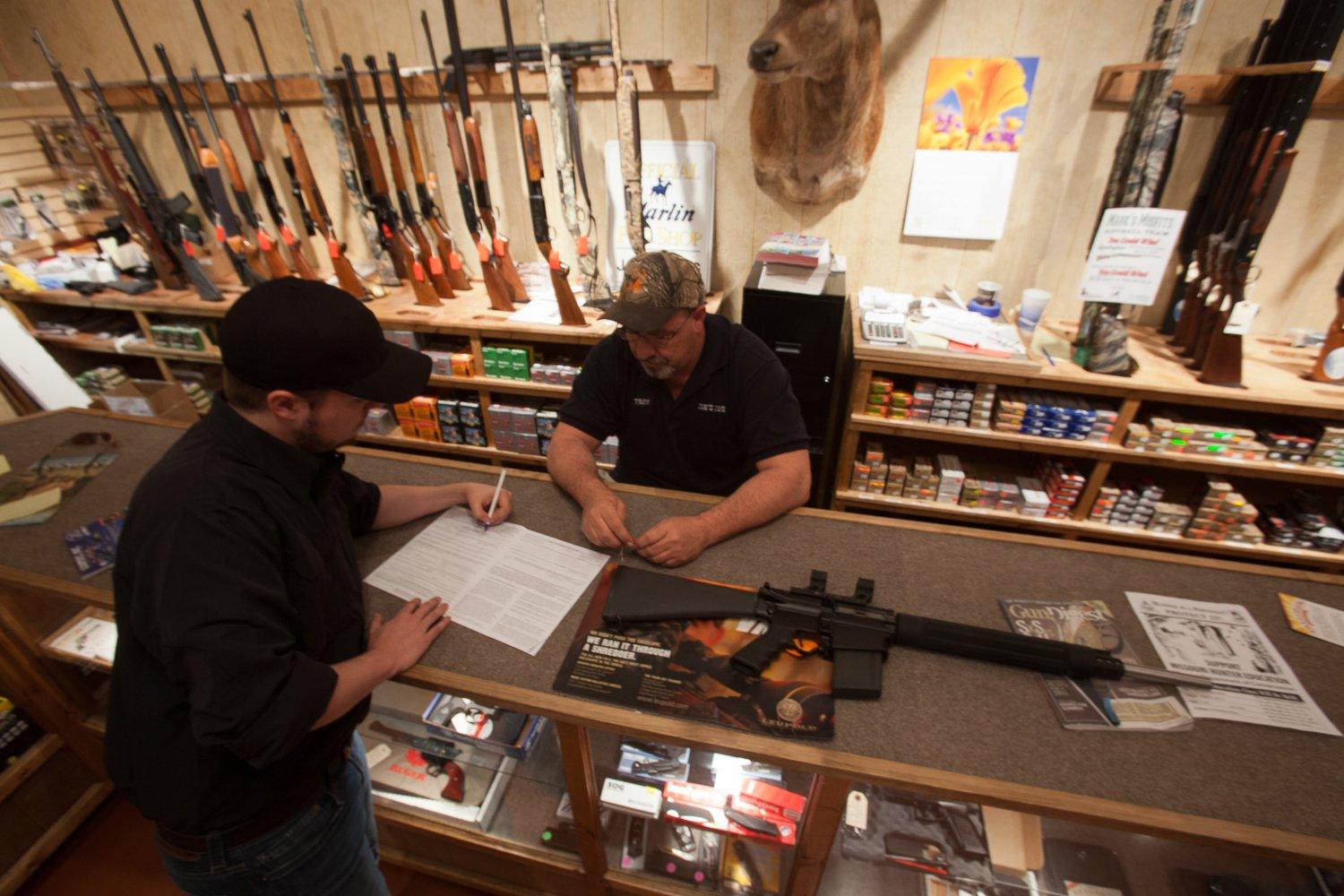
Another factor to consider with .223 or 5.56mm barrels is the rate of rifling twist. Factory-loaded bullets for these calibers may weigh from 40 grains to 75 grains. The bullets are the same diameter, so the heavier ones are longer. Longer bullets typically shoot better with a faster rate of twist, like 1 in 7 as opposed to 1 in 9. Most hunters won't notice a huge accuracy difference between the two, but it is something to consider, especially if you plan to be shooting a lot of rounds on one or the other of the weight spectrum. Lighter bullets are faster, and often in more frangible designs suited for varmint hunting. Heavier bullets, while slower, maintain momentum better at long range, and are less affected by wind drift. They may not have the explosive effect on a coyote of the light, fast bullet, but they tend to penetrate better on deer.
Handguards
The handguard covers a portion of the barrel where you might place your off-hand when shooting. Handguards come in two styles: free-floating and non-free floating. Handguards may also have Picatinny mounting rails, which allow for more accessories.
A non-free floating handguard is actually connected to the barrel. The downside of this contact with the barrel is its effect on the gun's accuracy. Anything contacting the barrel changes its vibrational characteristics when the gun is fired; accessories attached to the handguard affect these characteristics further. This combination of effects causes each bullet being fired to leave the muzzle at a slightly different angle, which has an increasingly bad effect on accuracy the farther the target from the shooter.
If your AR is a hunting rifle and its long-range accuracy is important to you, then you want a free floating handguard. These make no contact with the barrel.
Stocks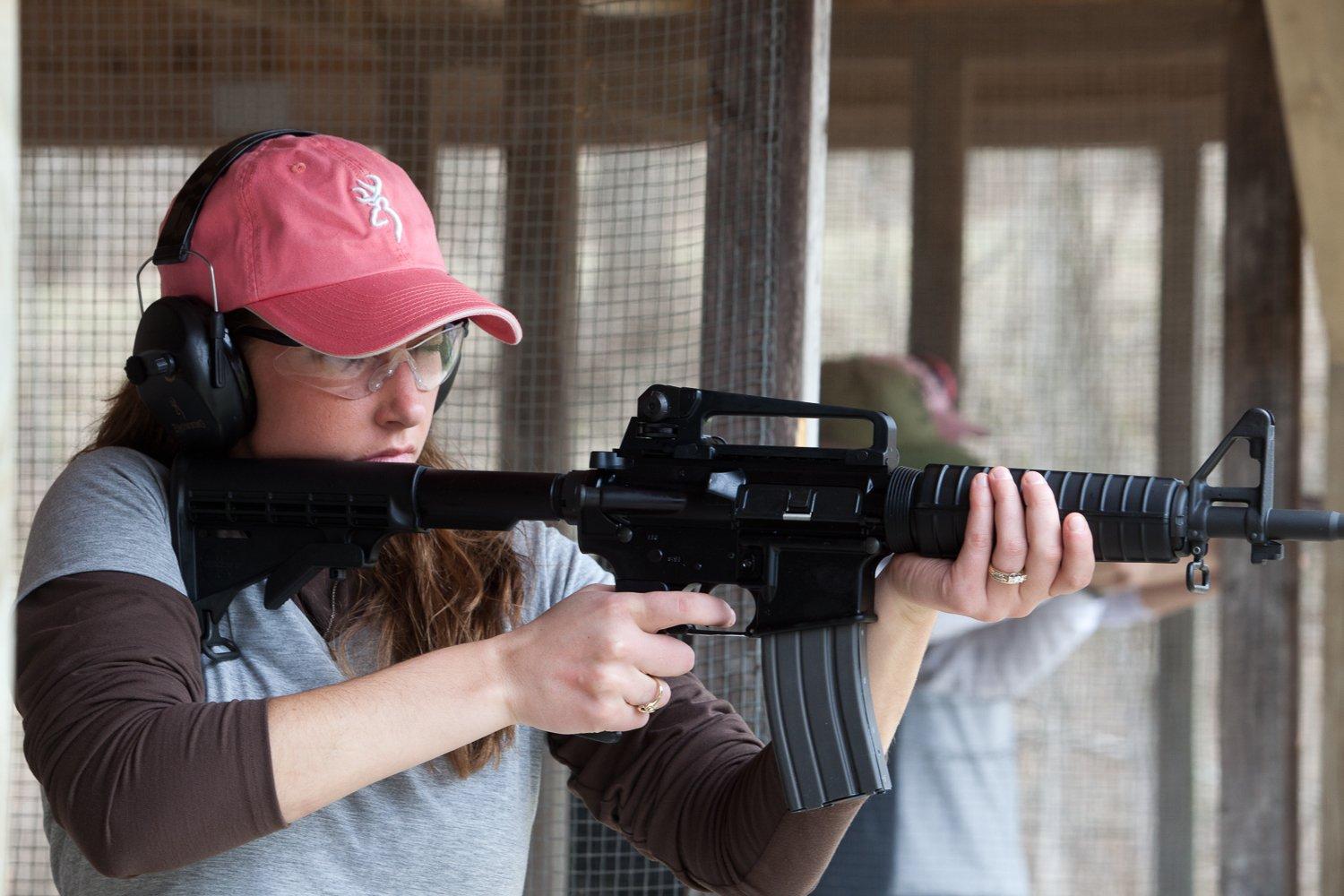
AR platform rifles are a great choice for hunters because they are so customizable and adaptable to different applications.
And they're easy to maintain. These rifles break down quick and are easy to put back together. You can remove most of the major parts without tools and for the parts that do require tools, a number of manufacturers sell specialty items that make every part of an AR cleaning job easier.
Still undecided about an AR? If you have never shot one, then maybe it's time to try one at your local range. And then, prepare to wait, because with the popularity of this gun and present politics in play, it might take up to 18 months to get your own version. Prepare to spend somewhere between $750 and $4,000.
GO CAMO WITH YOUR AR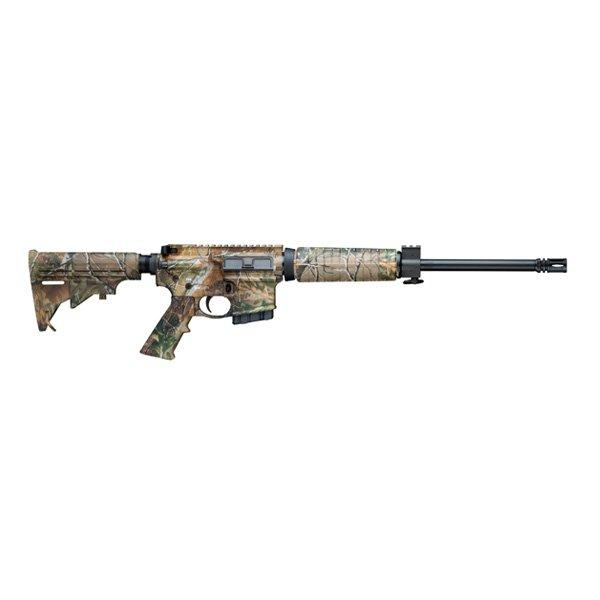
Daniel Defense AR-15, Ambush 6.8 SPC
With an adjustable butt stock and indexable foregrip, this gun allows a hunter to get quickly into the right position for the right shot. It also features a free-floating guard that extends 12 inches for easy hand placement and/or accessories. In Realtree AP.
Remington R-15 Byron South Signature Edition
Remington has a variety of AR-15 and AR-10 platforms in numerous calibers. Among our favorites is the Byron South Signature edition, a dedicated coyote gun in Realtree Max-1, designed with input from legendary predator caller and Realtree pro-staffer Byron South.
Smith & Wesson M&P15
Smith & Wesson's line of M&P rifles Chamber the AR-15 in 6.8 SPC, .300 Whisper, or .30 Remington AR. Manufactured on the M&P15 platform, any of these calibers offer low recoil and muzzle blast. In Realtree APG. Or, look at the new M&P10 in Realtree APG, which chambers .308-sized cartridges.
Yankee Hill Machine SPT-100-68
Chambered in 6.8 mm SPC II, this AR offers a free floating 20-inch 4140 steel barrel, YUM rifle-length customizable hand guard and 3-inch elevated modular rail, among many other features. In Realtree AP.
Go here for more Realtree Guns and Shooting. Follow us on Facebook.
Editor's note: This Realtree.com article was first published February 12, 2013.







